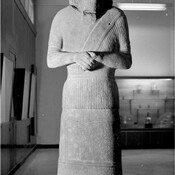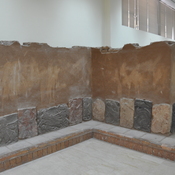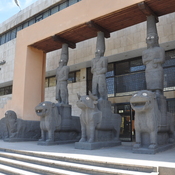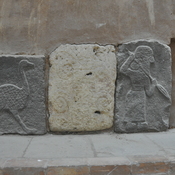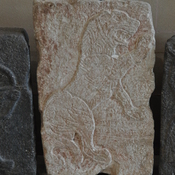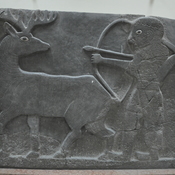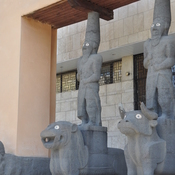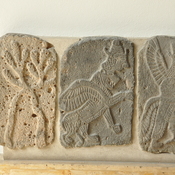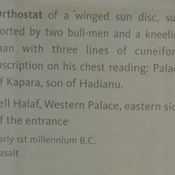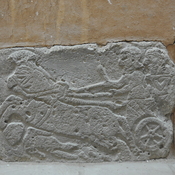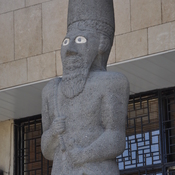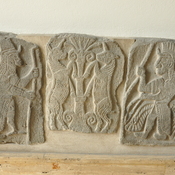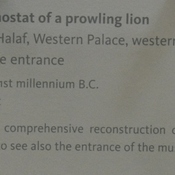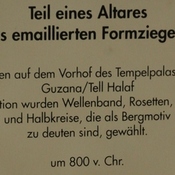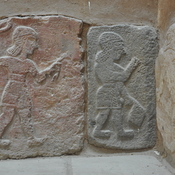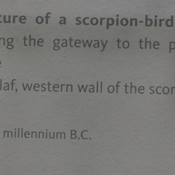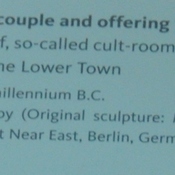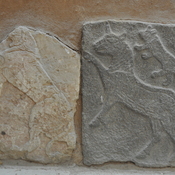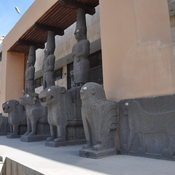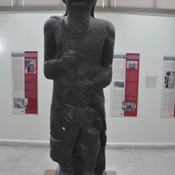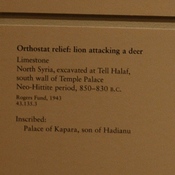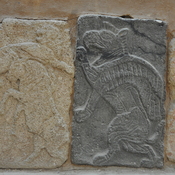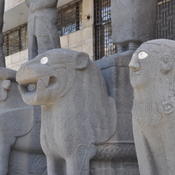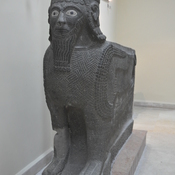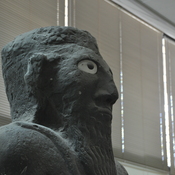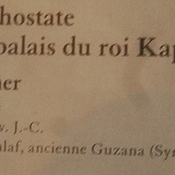Il n'y a pas une annotation en français. Présenté est une annotation en Anglais.
Tel el Fakhariya or Tell el Fecheriyeh (among other variants) is an ancient site in the Khabur River basin in the Al Hasakah Governorate of northern Syria. It is securely identified as the site of Sikkan, attested since c. 2000 BC. Sikkan was part of the Aramaean kingdom of Bit Bahiani in the early 1st millennium BC. In the area several mounds, called tells, can be found in close proximity: Tell el Fakhariya, Ra's al-'Ayn, and Tell Halaf, site of the Aramean and Neo-Assyrian city of Guzana. During the excavation the Tell el Fakhariya Bilingual Inscription was discovered at the site, which provides the source of information about Hadad-yith'i.
In the early 20th century Tell el Fakhariya was suggested as the site of Washukanni, the capital of Mitanni, but recently Edward Lipiński has opposed to this theory1.
See:
- Dominik Bonatz, Tell Fecheriye - http://www.fecheriye.de/en/introduction/
- Tell Feheriye, in: T. Bryce, The Routledge Handbook of the Peoples and Places of Ancient Western Asia, Routledge 2013, pp. 242-243
- Edward Lipiński: The Aramaeans: Their Ancient History, Culture, Religion, Peeters Publishers, 2000, p. 120
- http://ancientneareast.tripod.com/Fakhariyah.html
- Dominik Bonatz- http://www.fecheriye.de/tell.php?l=eng
Références
- ↑E. Lipiński, 2000, p. 120
Tel el Fakhariya or Tell el Fecheriyeh (among other variants) is an ancient site in the Khabur River basin in the Al Hasakah Governorate of northern Syria. It is securely identified as the site of Sikkan, attested since c. 2000 BC. Sikkan was part of the Aramaean kingdom of Bit Bahiani in the early 1st millennium BC. In the area several mounds, called tells, can be found in close proximity: Tell el Fakhariya, Ra's al-'Ayn, and Tell Halaf, site of the Aramean and Neo-Assyrian city of Guzana. During the excavation the Tell el Fakhariya Bilingual Inscription was discovered at the site, which provides the source of information about Hadad-yith'i.
In the early 20th century Tell el Fakhariya was suggested as the site of Washukanni, the capital of Mitanni, but recently Edward Lipiński has opposed to this theory1.
See:
- Dominik Bonatz, Tell Fecheriye - http://www.fecheriye.de/en/introduction/
- Tell Feheriye, in: T. Bryce, The Routledge Handbook of the Peoples and Places of Ancient Western Asia, Routledge 2013, pp. 242-243
- Edward Lipiński: The Aramaeans: Their Ancient History, Culture, Religion, Peeters Publishers, 2000, p. 120
- http://ancientneareast.tripod.com/Fakhariyah.html
- Dominik Bonatz- http://www.fecheriye.de/tell.php?l=eng
Références
- ↑E. Lipiński, 2000, p. 120



